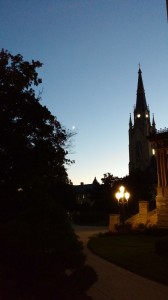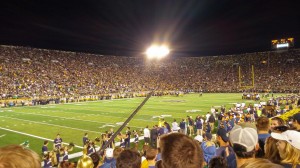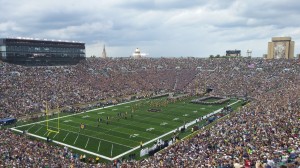A post from our student blogger Catie
As we have discussed before, patents grant their inventors exclusionary rights to the particular idea at hand. Think for a minute about all of the inventions in the world. Have you ever had a light bulb moment where you think of an idea and then joke around with your friends about how you should patent it? Have you ever considered that another person somewhere in the world may have had the same idea? With these thoughts in mind, consider how crazy the patenting process can be when multiple inventors are trying to patent the same invention! This happens quite often, particularly in the fields of science and technology where inventors are racing to find a viable method for treating cancer or to create the next big breakthrough in computerized widgets, respectively. Sometimes it really does come down to a race between inventors to see who is granted the patent!
There can only be one patent per invention, so you may be wondering at this point: who gets the patent? All countries follow a First-to-File (FTF) system to delegate who gets those rights. This means that whoever is first to file a patent application for the invention gains the exclusionary protection of this idea. This system has not been around very long in the USPTO; as a matter of fact, we were the last country in the world to adopt this system! The First-to-File system was enacted in the United States in March of 2013, along with tons of other new rules that were introduced as part of the America Invents Act (AIA). Basically, all that you need to know about AIA is that it enacted many new ‘rules’ that were basically just updated forms of patent rules and regulations that were already in place. Therefore, after March 2013, the first inventor to file a patent application of a particular invention with the USPTO was exclusively given the right to the grant of a patent in the US, regardless of whether or not that inventor was the first to actually invent it. Also, keep in mind that this does not guarantee that the invention will definitely be granted a patent or that it will be commercially successful. First-to-File simply grants the inventor the right to claim the invention with the potential to be patented!
Before the US utilized the First-to-File system, we had what was called the First-to-Invent (FTI) system. This system granted the protection of an invention to the inventor who could produce proof that he or she was the first person to conceive the idea and reduce it to practice. This demonstrates the importance of the inventor to keep a detailed lab notebook of ideas and the dates on which they occurred or were discussed. It is fairly easy to see how the First-to-Invent system could potentially be much messier than the First-to-File system. Providing legitimate proof that someone was the first person to conceive an idea and produce the invention can be very difficult and runs the risk of being based on arguments of personal accounts or biased evidence. If we are dealing with an invention that is pending a race between inventors to obtain a patent, then this whole situation can turn into a “who’s on first” argument in litigation of “who invented first”. The First-to-File system foregoes the arguments and confusion that must be delegated by the USPTO of who invented first and simply grants those rights to whomever was first to file their patent application. I think we can all agree that this was a smart move by the USPTO!


